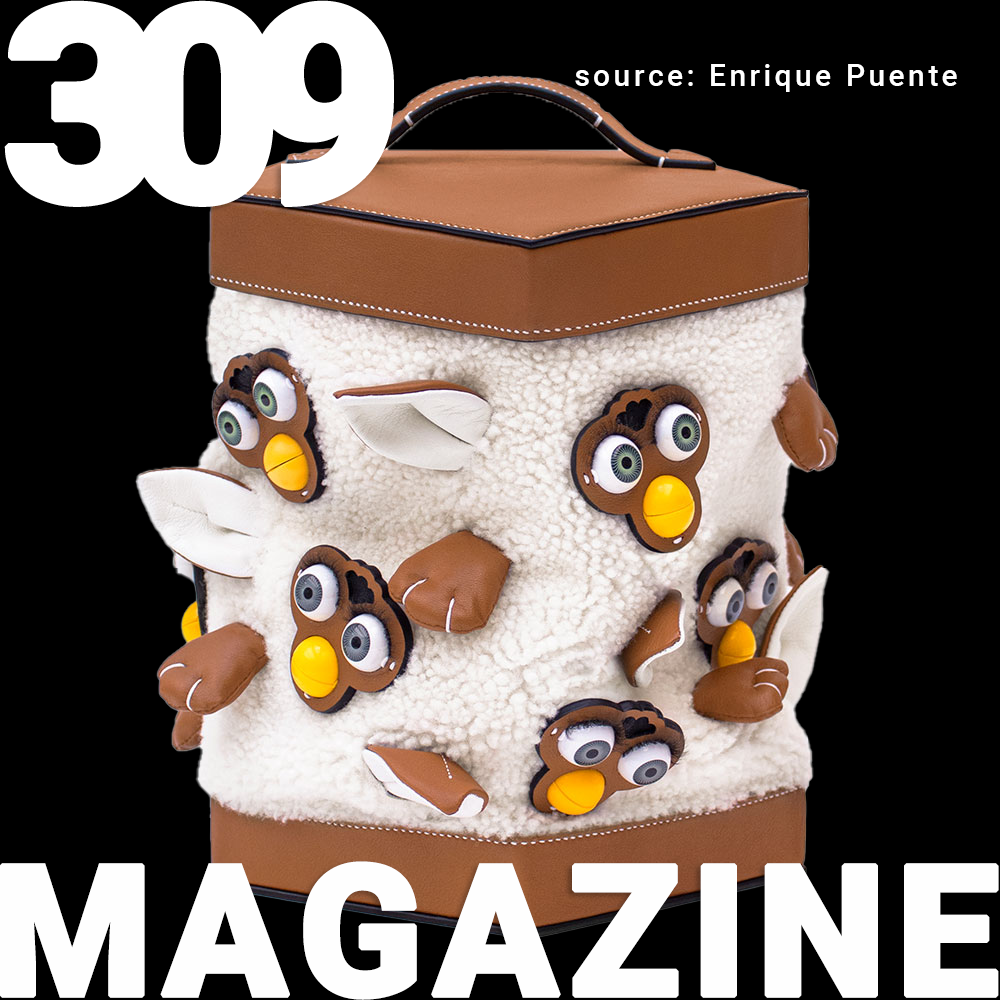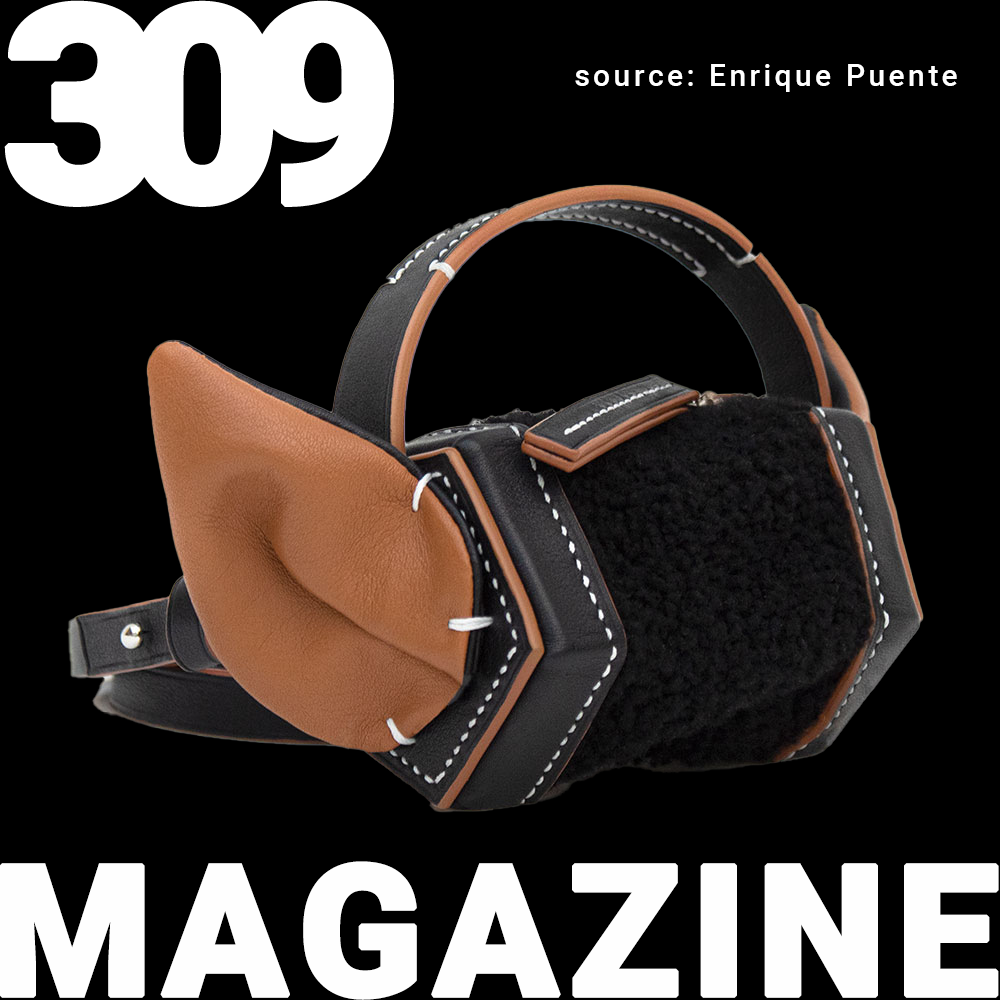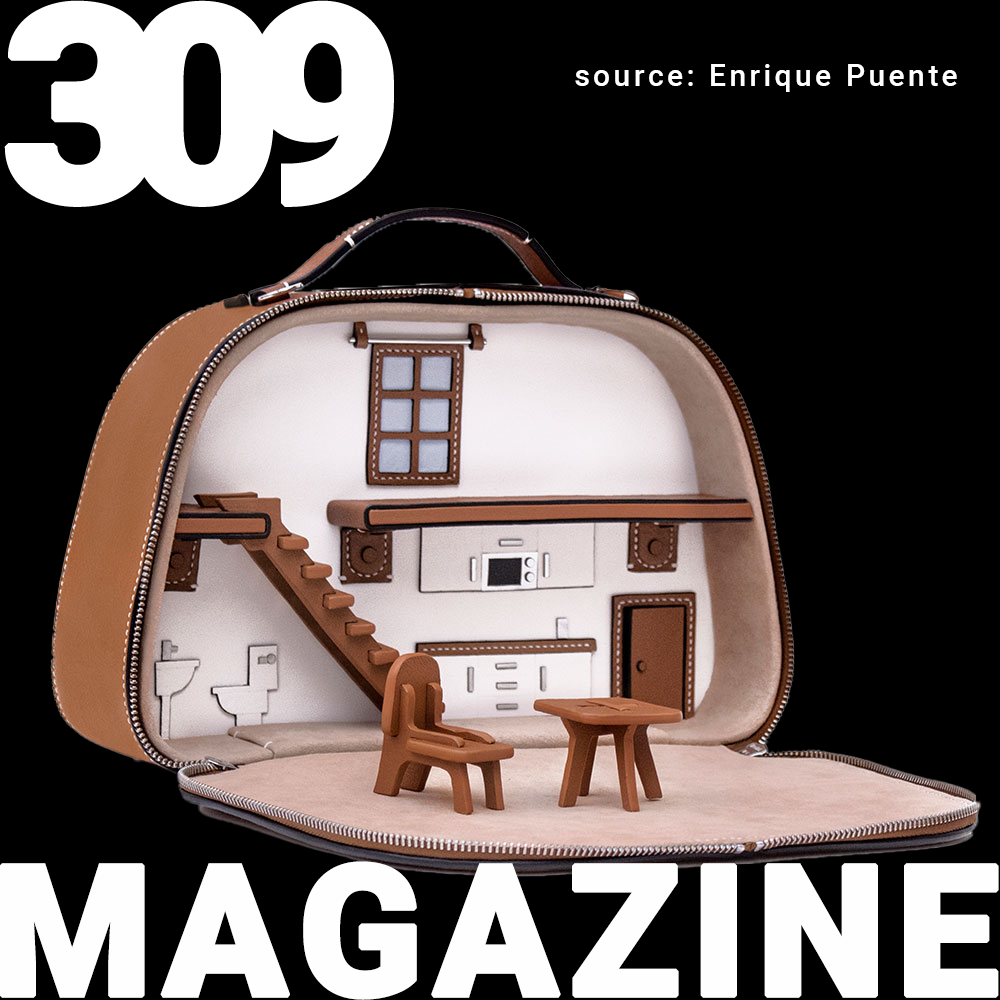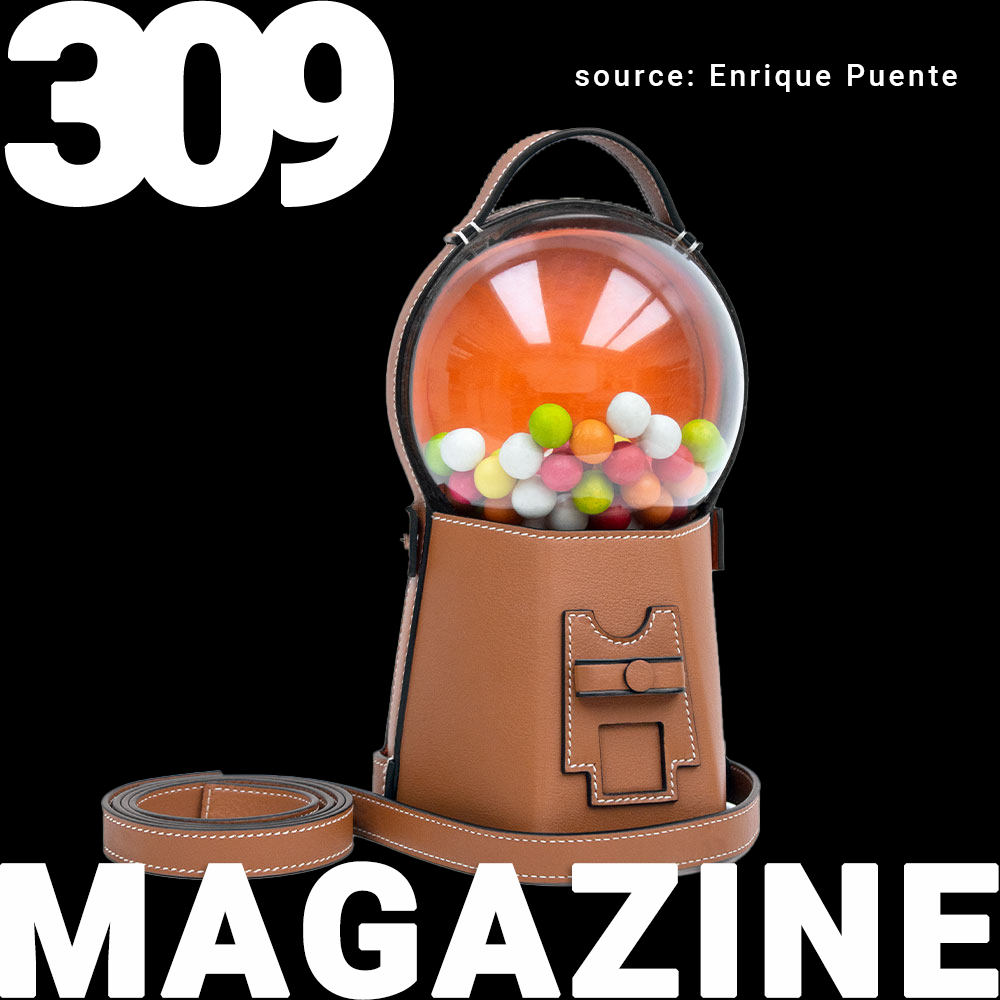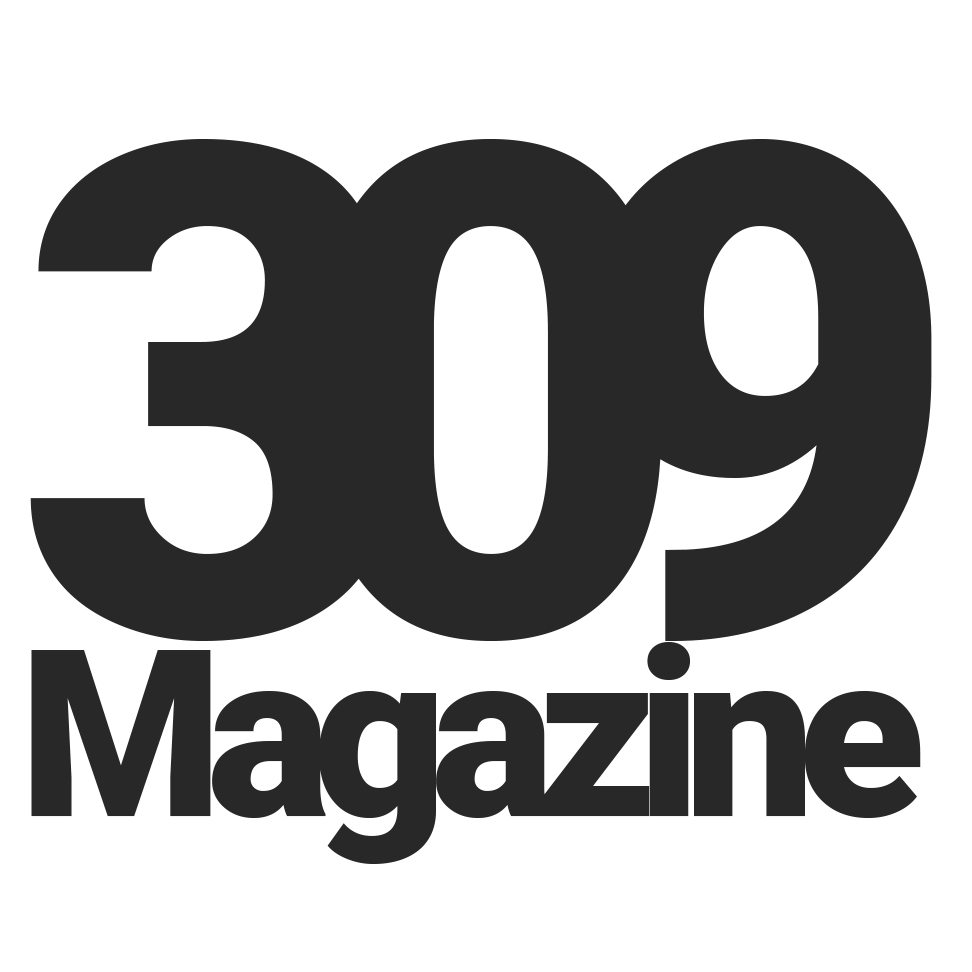In the aftermath of the Paris Fashion Week, we seized the opportunity to engage with the emerging talents from the Paris Fashion School. Our aim was to provide a platform for these budding designers to convey their unique perspectives and share insights into their creative journeys.
Our journey commenced with a conversation with the gifted designer, Enrique Puente, who generously shared his experiences, including the challenges he's encountered along the way.
We posed a range of questions to these designers, delving into various aspects of their creative lives. We explored their initial forays into the world of fashion, the wellsprings of their inspiration, the figures who kindle their creative flames, their methodologies in the design process, how they harness feedback, their strategies for navigating the industry's relentless pace, and their tactics for
overcoming creative obstacles.
1. Can you tell me about your background and what inspired you to pursue a career in high fashion design?
I remember it perfectly, when I was 13 years old I saw a fashion show by the Spanish designer Davidelfin on television and I was hooked, it was love at first sight. I told myself that I wanted to be a fashion designer, but it was several years later, when I visited the Hermès exhibition "Leather Forever", that I got goosebumps and became obsessed with leather goods, craftsmanship and savoir-faire. After visiting the exhibition I bought some of the tools I had seen and started creating handmade bags.
As for my education, I went to university in Madrid and did a degree in Fashion Design, in the last year I focused a lot on leather goods and footwear. I always had a very good eye and taste for volumes and details. In Spain it is practically impossible to design for luxury brands, so after a few years of working for many fast fashion brands in various countries, I decided to leave my comfort zone and go for what I really wanted, to dedicate myself to the design of luxury leather goods.
It was not an easy process because nobody hires you in a big luxury house so easily, so my only option was to take a master's degree at a renowned university and trust that this adventure would open the doors I dreamed of. A few months later I was accepted at the only university where I had applied, and in the blink of an eye I was in Paris about to start a master's degree in accessory design at the Institut Français de la Mode, I felt very lucky because they have very few places available for all the demand, but they quickly saw that craftsmanship and savoir-faire were my passion and that I fit perfectly with the luxury industry in Paris.
2. What fashion designers or brands do you admire most, and how have they influenced your design aesthetic?
We could spend hours talking about designers, brands, and specific bags and garments, but I think that being Spanish, Loewe has had a lot of weight in my life. Hermès too, as it was the trigger for me to want to become a leather goods designer.
As for designers, I admire Miguel Adrover and Jean Paul Gaultier very much, I think they are both visionaries and helped me to develop my mind and the concept of design.
3. Describe your design process from concept to final product. How do you approach each stage of creating a new collection?
The process can start in many ways, sometimes it's an idea that comes to you out of the blue, or someone has a problem and you think of a solution you can provide. If it's working for a brand, often you start with a briefing, a mood board with images, or a bag that needs to be relaunched.
In general, I like to be as creative and open as possible at all stages, throwing out lots of ideas at once, translating the concepts into sketches and then going through the funnel to discard or merge ideas/concepts. Many times I also force myself to go out of my comfort zone and test my limits, I force myself to think of different things so I don't fall into the routine of always designing the same thing.
From there I can get more elaborate sketches where you can understand the shapes, details and constructions. A first model on paper helps a lot to visualize the volume, I love making mock-ups on paper, I can make dozens of them in different sizes to reach a specific volume, and I don't stop until I'm not satisfied.
I also think it is very important that from the concept to the designs, the origin and essence of the collection or the idea are not lost. The design process is very changeable, and sometimes this works against us because we can be influenced by other people or creators. You have to be original and differentiate yourself from the rest at all times.
4. Can you share some of your recent work or projects that you are particularly proud of? What was your role in those projects?
My last big project was my final collection of the Master in Accessories Design that I did at the Institut Français de la Mode. It was a very long process and I enjoyed every moment.
I decided to base my final project on the feeling of nostalgia I have every time I go back to my hometown to visit my family. Since I stay at my parents' house and I still have toys from when I was a child, every time I go there I feel like playing with those toys again. After finding the theme and creating storytelling, I got hold of some vintage toys I had as a child, like the Furby or Polly Pocket and developed different sketches and ideas. From there we had many feedback sessions with industry professionals and professors that helped us to get 100% of ourselves in this final project.
Apart from designing the collection, I also managed the materials and hardware with the suppliers. We were very lucky because we had several sponsors who provided us with a large part of the leather for our collection. The pattern making and assembly was the part I enjoyed the most because I did everything by hand as I have been doing since I visited the Hermès exhibition; I wanted to test myself, to try different things with this project, and I think I succeeded, because I never thought I would include the robotics of the Furby inside a bag to make it talk and move.
5. High fashion often pushes creative boundaries. How do you stay up-to-date with emerging fashion trends and technologies in the industry?
On a personal level, I think if you are an inquiring and creative mind, you are always aware of what is going on. I tend to go to as many museums, exhibitions and contemporary art galleries as I can to nourish myself visually.
Platforms like Instagram help a lot to keep up to date in this aspect, as you can follow different people with the same interests as you who share your tastes and keep up to date with what's new in terms of fashion, art, design, etc.
On a professional level, it is very important to go to trade fairs to see the new proposals from suppliers. It is also very convenient to go to the shops from time to time to touch the bags and understand the constructions, quality and finishes offered by the different brands that exist.
6. How do you handle constructive criticism and feedback on your designs? Can you provide an example of a time you had to make significant revisions based on feedback?
In my case I'm always asking for a second opinion from friends designers and professionals in the sector, I think it's very important to have the best possible feedback to apply it to the design; it's the only way to grow as a professional.
You have to take into account that there are always different profiles to ask and I think that depending on the project, you can ask for feedback more oriented to the technical, creative, storytelling, marketability, etc.
I could give many examples. When you work in big brands it rains feedback from all sides, especially if there are several departments involved (design, merchandising, product development...) sometimes people speak without thinking and say the first thing that comes to their mind without taking into account the whole design they have in front of them.
I think that when you know you're going to get feedback, it's good to be prepared with different options, variations and versions of the same idea, to offer a wide range of possibilities without losing the main idea.
When you give feedback to other people, I think you have to be respectful, understand the other person's proposal, put aside personal taste and give a real, constructive and professional opinion. When my designer friends ask me, I don't tell them what they want to hear, no matter how friendly they are, I give them feedback according to what I think.
7. Collaboration is essential in the fashion industry. Can you talk about your experience working with other designers, stylists, or production teams to bring your designs to life?
I have had both good and bad experiences when working in a team. Sometimes people put their personal opinion and ego above all else and don't realise that they are in a team that is working for a brand/project. Sometimes this behaviour arises when you have had a mentor who behaved in this way, or when the team leader does not lay the foundations within the team.
In my case, I took my first steps in the fashion industry with very professional people where everything was openly discussed and shared between the different design teams, production, merchandising, etc. I learned that the good thing about working in a team is that several heads think better than one; and that if you have a doubt about something, the best thing to do is to go and ask whoever can help you solve it, to communicate about everything. You can always get a much better end product when you work in a team.
8. High fashion often involves working with luxury materials and intricate techniques. How do you ensure the quality and craftsmanship of your designs?
The whole process has to be aligned, it is very important to surround yourself with good suppliers and manufacturers. Any design can be ruined if a material is not of the expected quality, or if the manufacturing is not good. I always try to choose material suppliers with certifications and suppliers that have passed external audits.
In general, I almost always trust 100% the suppliers when they suggest an alternative material to the one proposed for quality issues; or the factories when they want to change some details of a model to make the final product look better, they are the craftsmen and they have the experience in highlighting the craftsmanship of the manufacture.
9. What challenges do you foresee in the high fashion industry in the coming years, and how do you plan to adapt and thrive in this dynamic environment?
I think the big challenge remains that of sustainability, moving towards a more sustainable world where better and better practices are used, and where the consumer is aware of how much consumes and buys. As a designer, I always try to choose the most sustainable materials, use deadstocks and bring versatility to the styles.
Another challenge that I think is important is linked to creativity; I feel that it is increasingly difficult to find fresh ideas that have not been used before, but by opening your eyes, paying attention to the environment and using new materials and techniques, you can thrive.
10. In the fast-paced world of fashion, deadlines are crucial. How do you manage your time effectively to meet project deadlines and maintain a high level of creativity?
I work as a freelancer for several brands/clients, and sometimes I have to sacrifice free time in order to keep to the schedule. It's essential to be organised and realistic to find a system that works for you. I used to think that I had to work from 9 to 5 from Monday to Friday, but over time (and being a freelancer) you can find other schedules that work better for you.
Working with clients in other parts of the world is also something that has affected my time management, as I always try to adapt to my clients who live in other continents in order to coincide in a time slot (online meetings, suppliers, etc.).
Sometimes I prefer to stay late working on a project and make up for it by getting up later the next day, or take advantage of a weekday morning to go to an exhibition instead of doing it at the weekend. In short, I think that getting out of the box and being able to adapt to what works best for you is often the most advisable thing to do.
11. Sustainability is becoming increasingly important in the fashion industry. How do you integrate sustainable practices and materials into your design process, and what are your thoughts on the future of sustainable fashion?
It is becoming more and more accessible to consider more sustainable alternatives, although there is still a long way to go. For my part, I always try to use materials with a percentage of recycled components, materials from deadstocks, or if not, a better alternative for the environment.
I think that when we stop calling it sustainable fashion and manage to integrate 100% sustainable practices in all processes, we will have reached the right point because fashion has to be sustainable from start to finish.
12. Fashion often involves tight budgets and resource management. Can you share an example of a project where you had to work within budget constraints and how you managed to create a stunning design despite the limitations?
A few years ago I worked for several fast fashion brands, and this was always the big problem, the tight budgets meant that the design had to change a lot in order to fit into the company's budget.
I think that working as a team, taking advice and looking for solutions together with the different departments is key. What helps the most is to change the material for a more affordable one, simplify the inner reinforcements, make the style slightly smaller, make strategic cuts in the pattern to improve material consumption, and eliminate unnecessary metal hardware.
13. High fashion can be highly competitive. What strategies do you employ to differentiate your designs and make them stand out in a crowded market?
I believe that brands need powerful storytelling, and from there you can work on the design following a creative process respecting the codes of the brand. Sometimes the best ideas are the simplest ones and all you need is for the idea to engage with the consumer.
I could sum it up by saying that the consumer does not need another tote bag that is the same as the rest, that is why it is important to have a storytelling, a concept, a function or a differentiating form that is given to this tote bag that will make the consumer buy it.
14. How do you handle creative blocks or moments when you’re struggling to find inspiration? Can you share a specific instance when you overcame such a challenge and produced outstanding work?
For me, the most important thing is to be able to start the project with a strong concept, mood board, storytelling or powerful message that makes sense and to know that it will continue to be so the day after tomorrow, I cannot allow the idea to be discarded because it was not consistent.
Many times I can feel lost, sometimes I have doubts about how to continue the process, or I ask myself if I'm on the right track; for me, what works best is to stop, go out for a walk to disconnect, and come back to the project keeping an eye to see when the project stopped making sense. I also often ask designer friends, it's important to ask for a second opinion with fresh eyes when you're stuck or unsure about something.
A recent experience was working for a French brand with a lot of background, I had developed quite a few proposals and variations, but at one point, I wasn't quite sure if this would fit 100% with the brand, if I was creative enough, or if this was what they expected from me as a freelance designer. Noticing my insecurity, I stopped and went for a walk and when I came back I gathered everything I had done and was able to see things more clearly. In this case, organising it better and unifying ideas was enough.
The next day the presentation was great with hardly any changes in the proposals.
15. Communication and presentation skills are crucial in the fashion industry. Can you walk me through a situation where you had to pitch your design concepts to clients or stakeholders and how you effectively conveyed your vision?
The truth is that I still have a lot to improve here, I don't consider myself a great communicator and I have a hard time presenting because I don't like to be the centre of attention.
A few months ago I had a very important presentation for me, it was with a brand based in Paris, we had a first meeting where they explained to me their situation, the change they were looking for, and they asked me to do a project with my vision for the brand, a very free project in terms of design.
Two weeks later, I presented them what they had asked me for: a project where the bag design had to have a renewed vision of the brand, something different, and contemporary but at the same time respecting its heritage. In this case, it was very important to start from a concept of realistic change, to work on their archives and to offer a more contemporary vision of what they are now.
I showed the whole design process behind the proposal, from the smallest details to the most important changes such as the logo. It was a long presentation with many different proposals, sketches and renders of bags; there were many changes with respect to what they had until then, but everything was well-developed and coherent. As soon as they finished, they asked me when I could start and they selected several models that they would develop as soon as possible to present them at the next Fashion Week.
In short, I think the key is to be realistic about the scope of the project and to show viability, explain the whole process of the project, and to be able to show that the project is feasible.
